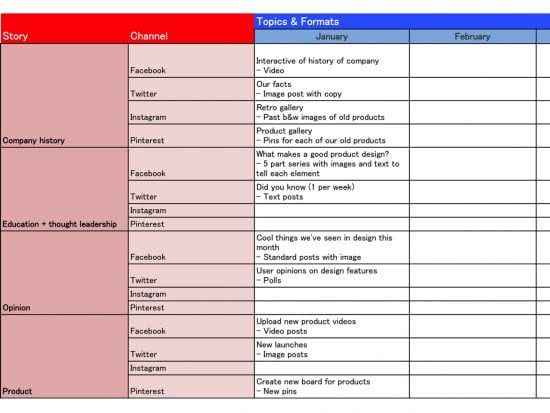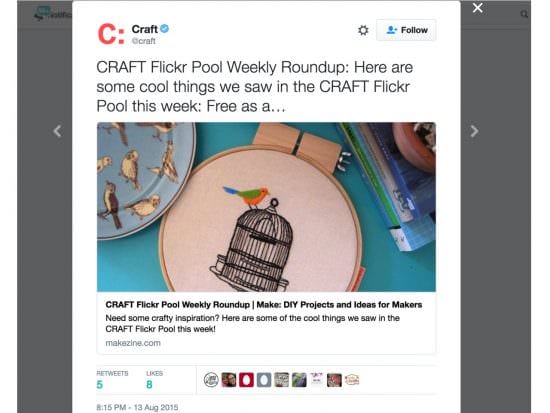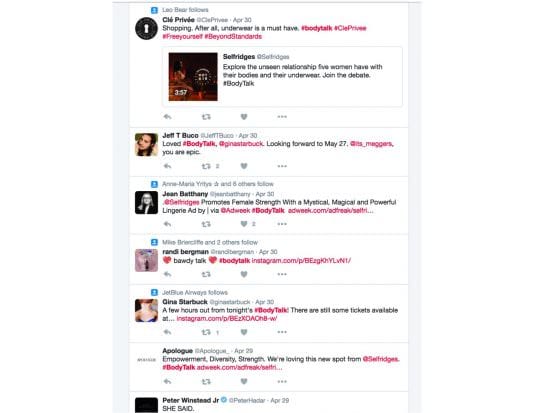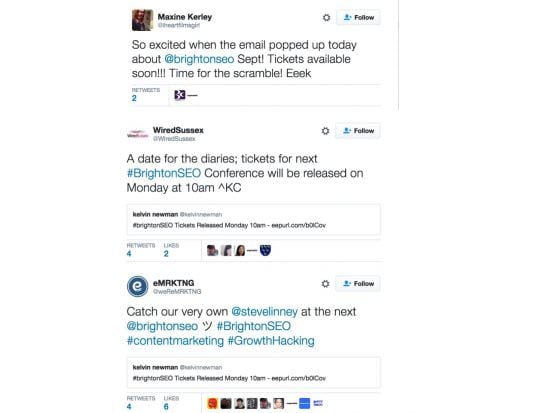Social media strategy and planning essentials series
This is part 5 of my Smart Insights 12 part social media series. In the last part, we looked at the role of organic vs paid social media and touched on the importance of content. In this blog, I discuss a sensible way to approach content planning for your social media channels.
Social media networks support multiple content formats and there has been rapid growth in the use of interactive formats, for example, carousel ads on Facebook. This flexibility of format (text, image, multi-image, video, carousel etc.) gives marketers the ability to experiment with different types of content to gauge how best to attract and engage social users.
If people are the heartbeat of social media, content is the blood. It’s your content that people see and respond to, and that communicates your values and messages.
But what content works? How do you plan what to talk about, on which platforms and in what formats?
Producing and sharing content is no guarantee of success. Smart content marketers understand the need to align social with other channels to ensure there is a consistent style of communication with customers and the stories they are telling, and that is driven by a clear plan rather than scrabbling each week to find something to share.
(If I ever utter the words “I need something to put in today’s Facebook post, any ideas?”, please shoot me).
Why is it important to get your content right for social media?
Social media is most often used for personal reasons to connect with friends and family, or to be part of conversations that align with your personal interests and passions.
If you serve content to people with this mindset that isn’t appropriate, relevant or useful, it can have the effect of turning people off and driving them away. Similarly, if you blast people with a constant stream of content, it can be overwhelming and come across like a shouting match.
You need to take the time to learn what people want to read/watch and make it digestible via the formats and channels they find most useful.
Why you need an over arching comms & content plan
Start with a clear comms and content plan that is aligned with business goals. This isn’t social specific; it should govern how you communicate with customers across all channels. Social can then inherit this plan and adapt it to suit social networks.
For example, you may have a campaign launching a new detailed guide and social is used to seed snippets from the guide over X weeks with a hook to download the full content. So the overarching plan guides what is being talked about and when, then the social media plan decides how to tell the story to a social audience based on content format, style and execution.
Before you start posting content, you need to answer the following questions:
- What are we trying to achieve on social media and how does this align with core business goals/objectives/targets?
- What stories do we want to tell and how can we make them relevant to our social audience?
- What is our social customer profile and what types of content to they respond best to
- What’s the current state of the market – how do competitors and comparators perform socially and what content works for them?
- Who needs to be involved in content production and marketing?
- How will we measure the success of social content?
- How will we optimise and improve what we’re doing?
As you start to answer these questions, you draw up your social content plan that is based on audience needs and market context.
This shouldn’t be overly complicated; it needs to provide simple guidelines to help focus social marketers on the what/why/when of content marketing.
“Without a useable comms and content plan it is much harder to gain traction with your audiences. You may achieve siloed spikes in activity through individual campaigns but it is much harder to build momentum around brand awareness and engagement. By having a content plan in place that clearly answers the Why, What, Who and How, you will be able to be more adaptable and reactive with your content.”
Sejal Parekh, Brand and Creative Strategist @holasejal
The Smart Insights content marketing strategy hub page has lots of helpful articles and guides to steer you in the right direction.
Here are two more handy resources to help you create your content strategy and plan:
Competitor analysis for social content
Imitation is flattery.
By this, I don’t mean copy what your competitors are doing, but if you are fighting for mindshare amongst a similar audience, it pays to know what content that audience currently consumes and responds to. You can then factor in popular topics and content formats into your social content plan.
By knowing what competitors are doing, you can also quickly identify content gaps:
- What topics aren’t they covering?
- Which topics are they covering poorly, with low-quality content?
- Which topics are they covering but not comprehensively, so there’s an opportunity to establish a niche foothold?
Let’s use a real-world example.
I set-up the social media strategy for a crowdfunding startup. We reviewed our competitors’ comms and content approach and realised there was a big gap for ‘inspiration’. There was lots of factual information around crowdfunding + stories from people who had successfully funded, but nobody was using content to inspire people to take action. Everything was about how crowdfunding works, not what makes a great idea and what drives success, two critical ingredients to using crowdfunding successfully.
Originality is inspiring.
We decided to create inspiring content through other people. We ran a series of inspirational events featuring speakers who had a success story to tell, to demonstrate that success is unique to each of us and what makes each person successful varies but people who achieve have some things in common e.g. drive and ambition.
This helped generate unique content that drove social engagement:
- Announcements of new free events at our London base (with Eventbrite registration)
- Announcements for new speakers and a profile (amplified by them sharing with their personal networks)
- Live tweeting to share quotes and insights from the speakers, via the hashtag #shedevents
- Post-event write-ups and photos for visual content
- Quotes from the speakers for short social posts
- Post event interviews with some of the speakers around topics related to inspiration.
The results:
- Increased event attendance by 50%
- Increased social followers by 110%
- Increased social engagement (# posts shared, commented etc.) by 65%
Creating a social media content marketing calendar
Keep this simple. Work on a quarterly basis and build out the content plan month-by-month aligned with your overall content calendar.
You should have a set of stories that need to be told, then break down for each month which story components are the focus and the content formats and social channels that will be used to distribute the messages.
There are many ways of doing this. Below is just one approach I’ve used:

I like to map channel-level content activities back to high-level content stories, so there’s a clear link with the overall content plan. It means that each time I’m thinking about what content should be posted, I’m making sure it supports a key story.
That doesn’t mean there’s no place for ad-hoc; there always is. But you don’t plan ad-hoc! Embrace the opportunity to post content that isn’t part of the core stories, provided there’s a clear reason to do so that’s in tune with your content marketing strategy i.e. don’t start sharing content that’s not consistent with your brand style/voice.
Optimising content for a social audience
Businesses produce a lot of content; don’t restrict your social channels to content the social team produces. Think laterally.
For example, customer service teams create a lot of helpful content for users, answering FAQs and enquiries. They often add to the business knowledge base, and this information can be really helpful to social customers e.g. care instructions for a product. However, the content may not always be in a format and style that’s suitable for a social audience, so you can take the raw content and repurpose for your social channels.
Let’s use the example of care instructions. You could turn this into ‘Tip of the day’ for Twitter, using short-form, take-away advice that can link to more detailed content on your website.
Creating regular hooks
Find a content format that can be used to create regular posts that encourage people to come back for more.
The example from Twitter below shows @Craft posting weekly roundups from its Flickr pool, so using content from one social channel to create new posts on another.

Hashtags are a good example. If you can establish a #hashtag in customers’ social vocabulary, you’ll benefit in two key ways:
- Posts you tag with the # are more likely to be noticed as many will be monitoring the
- Other users will include the # in posts, building the conversation without needing you to create all the content
Many brands use hashtags to create social conversation threads. Selfridges uses #bodytalk to coordinate social activity off the back of its physical events.

Increasing content reach
You want the biggest reach possible (amongst relevant audiences) so that you optimise your investment. This means finding ways to encourage other social users to share your content with their wider network. Below I look at 3 techniques to enable this:
Scarcity
You’ve got something but there isn’t much left and people have to hurry to get it. Scarcity is often a marketing veil but if used well can drive social activity. A good example is popular events where tickets sell out quickly – publicising the ticket launch date well in advance drums up interest.
In the UK, Brighton SEO is a great example. @kelvinnewman and the team have grown the event to be a leading European SEO event and tickets sell out within minutes of release, but the marketing starts a long time in advance to get people hooked and talking about the event.

Uniqueness
If you offer something that people can’t get anywhere else, and it’s relevant to them, you stand a good chance of getting their attention and increasing engagement with your social content.
Oreo is a good example. For Halloween they created a series of Vine videos spoofing popular horror films. Unique, funny and shareable.

The brand also uses an ‘Open up with Oreo’ storyline that posts short messages with images and animated video to bring the brand to life.
Amplification
Find influencers who have their own engaged audience (don’t just think ‘people with millions of followers’, the followers need to actually listen to what they’re saying). Come up with a value proposition for them that encourages them to listen to what you’re posting and then share your content.
Test, measure and learn
How do you know what content works in social media?
Even without web analytics or social media analytics, you can very quickly look at engagement metrics for individual posts e.g. likes on Facebook, RT on Twitter.
However, to know how content contributes to your digital KPIs and ROI, then you need to ensure you’re measuring a much wider set of metrics. A few tips:
- Add campaign tracking to all posted links (using a consistent tracking taxonomy)
- Use social reports in web analytics to monitor social sessions and conversions
- Use referral reports to compare social domains to other domains for referral traffic
- Use landing page reports and then apply social segments to gauge social impact for key content pages
You should also use social network specific analytics to explore the impact of your content. For example, on Twitter you can compare month-on-month for total engagement and drill down into tweets with the most impressions and engagement.
Make sure you define the KPIs you will measure success against and then ensure reports are set-up to provide the data for analysis. Don’t go into the analytics tools with no idea what you want to measure – you’ll waste a lot of time!
Useful tools
It helps to use a toolkit to coordinate and automate social content marketing. That doesn’t mean remove the human element and personalisation, it simply means use tools to help you get your messages out there efficiently, for example queuing Tweets to be sent at times that are most likely to get engagement from your followers.
There are lots of free and paid tools out there. Below is a small list of ones I find really useful:
Hootsuite/Tweetdeck
Social media aggregation platforms to help you coordinate your streams, schedule updates to multiple platforms and monitor keywords/hashtags to see what content other people are posting/responding to.
Buffer
A great queuing system that helps you plan bulk updates and set a publishing schedule for each social network, as well as providing URL shortening and tracking (though you can of course use your own).
Followerwonk/Audiense/Buzzsumo
For identifying key influencers based on topic, location etc., really useful for connecting with people who can amplify your content.
Your thoughts, comments and personal experience
So this is step 5 in the Smart Insights 12 step series on social media strategy and planning.
Did you find it useful?
How important is content to your social media marketing? What tips and techniques can you share to help others?
Please join in the discussion and share your experience in the comments field at the bottom of this page.
Keep an eye out for next month’s article, “Aligning and integrating social media with other marketing channels”.
Missed the previous articles? Catch-up here:
- 6 reasons why you need a social media strategy
- How to create a social media strategy and plan
- Using competitor analysis to inform social media plans
- Understanding the role of organic and paid social media
Thanks
James

Thanks to
James Gurd for sharing his advice and opinions in this post. James is an experienced ecommerce and digital marketing consultant with more than 14 years’ B2C and B2B digital strategy and transformation experience. He is the Owner and lead consultant at
Digital Juggler. You can follow him on
Twitter or connect on
LinkedIn.








 Thanks to
Thanks to 


